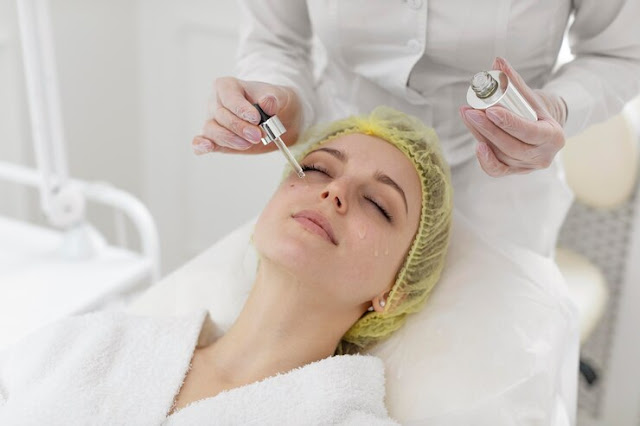Hair Restoration 101: Understanding the Basics of Hair Loss and Treatment
Hair loss can be a distressing experience for both men and women, especially in a world where appearances matter. The good news is that various treatments are available to address this issue. This article explores the causes and treatments of hair shedding, providing a comprehensive guide for those experiencing or interested in learning more about the condition.
What is Hair Loss?
Alopecia, also known as hair loss, is a condition that can cause complete or partial loss of hair on the scalp or other parts of the body. Various factors, including genetics, hormonal changes, underlying medical conditions, certain medications, and chronic stress, can cause this condition. Hair fall can be a temporary or permanent issue, significantly impacting an individual's self-esteem and emotional well-being beyond just physical appearance.
Causes of Hair Loss
Genetics
Genetics primarily determine alopecia, and it can be inherited. If your family has a history of hair fall, you are more likely to experience it.
Hormonal Changes
Hormonal changes can significantly impact hair health. Fluctuations in hormones, such as during pregnancy, menopause, or caused by conditions like polycystic ovary syndrome (PCOS), can result in thinning of hair.
Medical Conditions
Certain medical conditions, such as lupus, thyroid disorders, and diabetes, can contribute to hair loss. These conditions affect the body's overall health, and hair is often an early indicator of underlying health issues.
Medications
Some medications and treatments, such as chemotherapy drugs, may result in hair falling off as a side effect. Fortunately, many instances of balding can be reversed through treatment, making it a temporary issue.
Stress
Chronic stress can lead to hair shedding, particularly in telogen effluvium cases. Managing stress effectively to prevent this kind of hair fall is crucial, as prolonged or severe stress can trigger it.
Types of Hair Loss
a. Androgenetic Alopecia (Male and Female Pattern Baldness)
Androgenetic alopecia, commonly referred to as male-pattern baldness and female-pattern baldness, is the most common form of hair loss. It is mainly hereditary and results from genetic and hormonal factors.
b. Alopecia Areata
Alopecia areata is an autoimmune condition where hair falls out in patches due to the immune system attacking hair follicles.
c. Telogen Effluvium
Telogen effluvium is a temporary hair fall condition triggered by a shock to the body, such as surgery, stress, or illness. It causes hair to enter the resting phase and eventually fall out.
d. Traction Alopecia
Traction alopecia is the shedding of hair caused by repeated pulling or tension on the hair, often due to tight hairstyles like braids or cornrows.
Hair Restoration Options
Over-the-counter (OTC) Hair Loss Solutions
a. Minoxidil (Rogaine)
Minoxidil is an FDA-approved OTC topical treatment that can help slow hair loss and promote regrowth in some individuals.
b. Caffeine-Based Shampoos
Shampoos containing caffeine stimulate hair follicles, promoting hair growth.
MedSpa Hair Treatments
Platelet-Rich Plasma (PRP) Therapy
PRP therapy is a non-surgical and minimally invasive procedure involving drawing a patient's blood, processing it to extract platelet-rich plasma, and injecting it into the scalp. PRP contains growth factors that stimulate hair follicles, encouraging hair growth and thickening existing hair.
Read our blog to learn more about the benefits of PRP for hair.
Hair Transplant
Hair transplant surgery, including follicular unit transplantation (FUT) and follicular unit extraction (FUE), involves moving hair follicles from one part of the body to the scalp. This procedure can be highly effective, but it can also be costly.
Laser Therapy
Low-level laser therapy (LLLT) is a safe and non-invasive procedure that stimulates hair follicles using red light. This therapy, available as laser combs or helmets for home or clinic use, increases scalp blood flow to promote hair growth.
Mesotherapy
Mesotherapy is a technique where the practitioner injects a cocktail of minerals, vitamins, and other nutrients into the scalp. It aims to improve blood circulation, strengthen hair follicles, and promote growth.
Preventive Measures and Lifestyle Changes
- Balanced Diet: A diet rich in minerals, essential vitamins,
- and proteins can promote hair health.
- Regular Exercise: Physical activity improves circulation and may help maintain a healthy scalp.
- Stress Management: Stress-reduction techniques like yoga and meditation can help prevent stress-related hair loss.
- Avoid Tight Hairstyles: Limit hairstyles, such as tight braids or ponytails, that put excessive tension on the hair.
- Use Gentle Hair Products: Choose gentle shampoos and conditioners on the scalp and hair.
Understanding the basics of hair loss is the first step in addressing this common concern. Whether it's due to genetics, hormones, or other factors, various treatment options are available, ranging from over-the-counter solutions to advanced surgical procedures. Additionally, adopting a healthy lifestyle and practicing preventive measures can contribute to maintaining a full head of hair.
Find the best hair restoration options at M Health and Beauty. We offer PRP for hair regrowth. Our expert board-certified aesthetic practitioner offers a treatment plan according to your needs. Hair loss can be challenging, but with the proper knowledge and interventions, you can regain confidence and achieve healthier, more vibrant hair.


Comments
Post a Comment